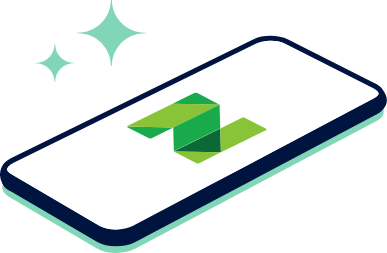Experian Boost vs. UltraFICO vs. eCredable: Which Credit-Building Tool Fits You Best?
These services provide ways to build your credit score using alternative data, but they work in different ways. Learn more about each to find the right fit for you.

Many, or all, of the products featured on this page are from our advertising partners who compensate us when you take certain actions on our website or click to take an action on their website. However, this does not influence our evaluations. Our opinions are our own. Here is a list of our partners and here's how we make money.
Experian Boost, UltraFICO and eCredable try to expand what counts toward your credit score calculation by adding nontraditional information — like rental and utility payments — to your credit profile.
Your payments are reported to the credit bureaus, which builds your payment history — the most important credit scoring factor. These services are voluntary, and you must opt in to have this data shared with one or more of the three major credit bureaus: Experian, Equifax and TransUnion.
The goal is to help people who are just starting out, have a thin credit file or who are rebuilding credit to increase their chances of approval for more traditional credit products like credit cards and loans.
Here’s a quick look at each service:
- Experian Boost is quick and free, but limited to one bureau and certain bills.
- UltraFICO leverages your bank account data at the time of a loan application to give lenders more context, but it’s not widely adopted and requires the sharing of more personal information.
- ECredable is broader in the kinds of bills it can add and reports to TransUnion as a tradeline, but it comes with a monthly fee.
Here’s a more detailed breakdown of the three companies, what they offer and how much they cost:
Experian Boost: Quick wins, but only with Experian
Using Boost lets your streaming, phone and utility payments "count" toward your Experian credit score. Renters can also sign up to have eligible rent payments reported to the credit bureau.
Eligible payments include:
- Phone and internet services.
- Rent.
- Utilities such as water and gas.
- Telecom.
- Insurance such as home, life and auto (excludes health insurance).
Boost scans your bank transactions for the payments, and reports only positive payments — however, bills must be in your name to qualify. Eligible payments are only added to your Experian credit report.
Cost: Free.
Downsides: Since Boost only reports to Experian, you might not get the credit boost you were hoping for. Lenders would see the effects of Boost only if they view your Experian credit report or pull those most commonly used credit scores using Experian data.
UltraFICO: Prove creditworthiness with your bank balance
UltraFICO is a special type of credit score you can choose to use that’s meant to enhance your existing FICO score. It looks at your regular bank accounts — like checking or savings — in addition to your Experian credit report. Unlike Experian Boost and eCredable, it does not impact your credit reports.
UltraFICO checks things like:
- How much money you usually keep in your account.
- How long you’ve had the account open.
- How often you use it.
- Whether you’ve had negative balances.
This extra info can help people with lower credit scores (in the high 500s or low 600s) look better to lenders.
To use it, you sign up on FICO’s website and connect your bank accounts. Then, when you apply for credit, lenders that use UltraFICO may offer to pull this version of your score if your regular credit score isn’t high enough. There’s only one hard credit check in the process.
Cost: Free.
Downsides: The impact to your score can be limited because it doesn’t raise your VantageScore. UltraFICO scores are not widely used, which means it will only help you if lenders request it. Because it requires you to link your bank account, people with data privacy concerns might be hesitant to use it.
ECredable: Build credit with everyday bills — at a cost
ECredable adds payment data from some monthly bills to your TransUnion credit report. The payment history can go back as far as 24 months.
Using the company’s basic service, eCredable Lift, consumers link their utility accounts — such as gas, power, water, garbage, cable or satellite TV, internet and some mobile or landline phones — and must provide login information for each. Then, eCredable pulls payment data directly from the utility providers.
Because payment information comes directly from the utilities, Lift can be used by people who pay in cash or use prepaid debit cards rather than a bank account or credit card.
Cost: $9.95 per month; $14.95 per month for the upgraded LiftLocker service.
Downsides: This is the only service that costs you money. You can link up to eight eligible accounts, but not all utilities work with eCredable — so be sure to check the company’s homepage to search if your specific utility companies are covered.
Stress less. Track more.
See the full picture: savings, debt, investments and more. Smarter money moves start in our app.
Other ways to build credit
Boost and UltraFICO influence only your Experian credit report and scores built using that data. You can do other things to strengthen your credit, and the effect of these steps can extend to all three credit bureaus:
- Become an authorized user on someone else’s credit card. When someone with an established credit line adds you as an authorized user, you benefit from their good credit habits. Make sure the card reports authorized-user status to the credit bureaus.
- Apply for a secured credit card. This starter card is backed by a deposit that also serves as your credit limit. It’s best to put a small, recurring charge on it and set up autopay. The small charge means you’re not using too much of your credit line, which can hurt your score. The automatic payment guards against a late or forgotten payment, which also can damage your score.
- Use a credit-builder loan. Credit unions typically offer this type of loan, which builds your credit and savings at the same time. It requires a monthly payment that’s held in a separate savings account until you pay off the loan.
- Use a rent-reporting service. Some companies offer to have your rent payments reported to the credit bureaus, allowing you to build your credit file.
Building credit takes time and patience, and it pays to track your progress. NerdWallet offers a free VantageScore 3.0 credit score as well as a free credit report from TransUnion.
Article sources
NerdWallet writers are subject matter authorities who use primary,
trustworthy sources to inform their work, including peer-reviewed
studies, government websites, academic research and interviews with
industry experts. All content is fact-checked for accuracy, timeliness
and relevance. You can learn more about NerdWallet's high
standards for journalism by reading our
editorial guidelines.
Related articles







